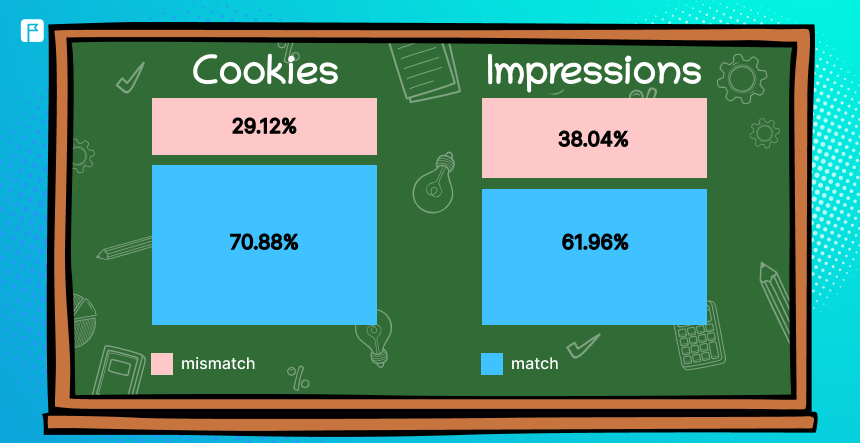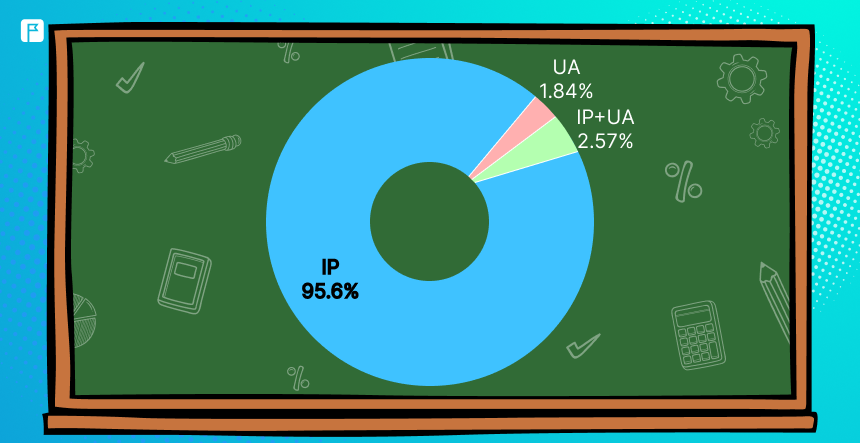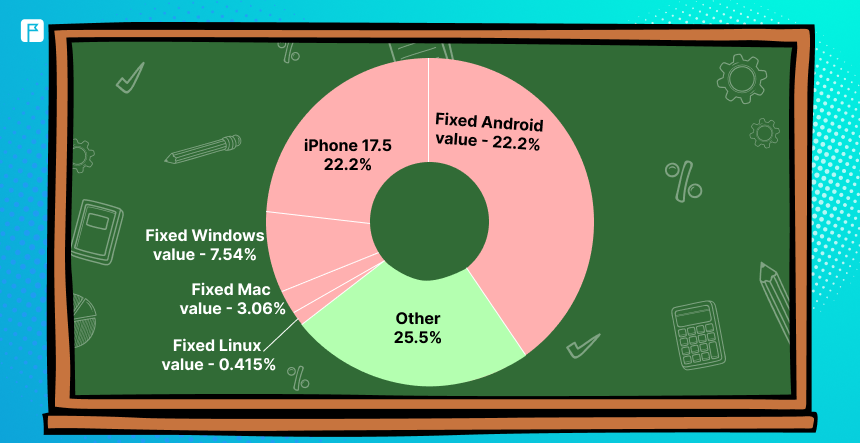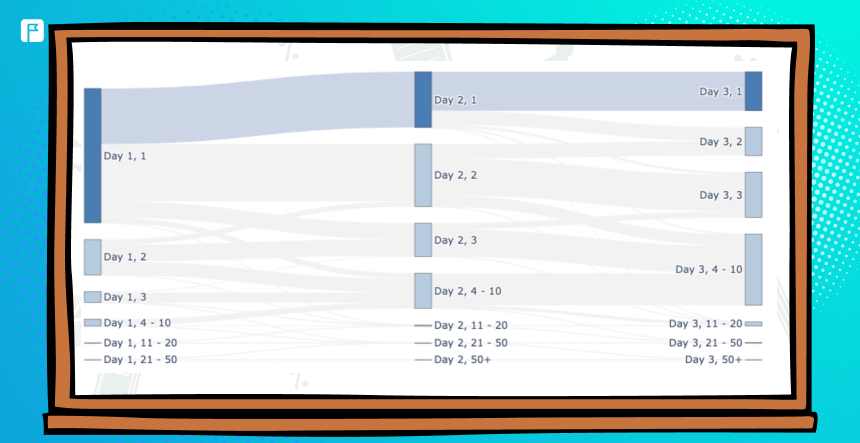Reaching the target audience strongly depends on the correct approach of identifying each single user precisely, as much as the quality of your traffic source.
As the puzzle is created piece by piece, unique users are identified via a combination of several approaches at once. Therefore, we decided to investigate whether method of user identification based on IP+UA is essential, or Cookies is still must have technique to compensate occurring disparities in the first place.
We will begin with the theory part—how each method works, what data about users it collects, and what challenges are faced. Then, we will learn more about IP+UserAgent combination, its accuracy compared to the Cookie approach, and how using both Cookies and IP+UA can enhance the quality of traffic attribution.
The Goal of the Research
The goal of the study: to compare different approaches in traffic attribution: IP+UserAgent vs Cookies
Uncovered topics:
- What traffic share is the same for both ways of attribution; This explores how often user identification remains consistent across these two tracking methods.
- What segment of changes in IP+UA attribution is associated with IP shifts, and which corresponds to UA shifts; This breaks down whether user shifts are mainly due to changing internet connections (IP) or device/browser updates (UA).
- What patterns exist in UA attribution and how it affects the precision of user identification; This section highlights common variations in user agents that can complicate accurate tracking.
- How long IP+UA can ensure a stable connection; This examines the typical lifespan of an IP+UA pairing before it changes.
To ensure we’re on the same page, let’s point out a few definitions and facts we’ll use in this Research.
What is What: Definition and Principle of work of IP, UA, and Cookies Attributions
IP Addressing
In short, IP (Internet Protocol) is a unique address assigned to your device to identify it on the Internet, making it available for communication with other devices on the web.
The IP approach is perfect for tracking a user’s location but struggles with identifying other users’ features since multiple users can share the same IP.
IP addresses can be categorized by Network Location (Public, Private) or Assignment Type (Static, Dynamic).
In this study, we mainly focus on public dynamic IP, which means that it can be easily changed for several reasons that don’t even depend on the user.
Issues with Tracking through the IP
Common factors leading to an IP address change:
Modem reboot;
ISP Lease Expiry;
Network Reconnection;
ISP Network Maintenance.
Of course, if you connect to the Internet via the same device but from a different Internet hotspot, your IP will also change.
Note: further, we will shorten the term “public dynamic IP” and simply refer to it as IP.
User Agent
User-Agent (further simply UA) is the part of HTTP-request that your browser automatically sends to the website server. This one-line text string contains details about: user’s browser and its version, type of the device and its OS, language used, and render approach.
Afterward, the server will present you with the most suitable website version based on the received information.
Who can identify your UA:
- Web browsers (Chrome, Yandex Browser, Opera, etc.)
- Search Systems (Google, Yandex, etc.)
- Gaming Consoles (Xbox, PlayStation)
- E-readers
Put simply, anything that connects to the Internet will probably get your UA information.
Note: you can take a look at your UA through services like 2ip.io.
Issues with Tracking through the UA
Let’s consider factors that can influence changes in UA:
UA Switcher is used
The user is running a UA Switcher program to hide personal information;
System auto updates
Browser (or system) automatically updates;
Browser features that hide some data
Some browsers have features that narrow down the data contained within UA. This results in the absence of required information to identify user’s return visits.
Cookies
Cookies are small files stored by the website’s server on the user’s device via the browser algorithms when they visit a website. Initially, Cookies were intended to improve the user experience by saving users time on setting preferences on a website. Before long, marketers and advertisers began to collect other types of information, transforming Cookies into tools for tracking and profiting from users.
Advertisers are most interested in permanent type of Cookies, because they contain all information about users’ previous visits.
What server can request from the user’s device to be written inside such text file:
- Choice of website settings (location, language, page scale, etc.);
- Authorization details (login, password);
- Personal Data (phone number, addresses, payment info);
- Information about User’s Visits (session time, device type, model and its OS, etc.);
- Data describing User’s Behaviour (clicks, redirects, the most viewed parts of the page);
Issues with Tracking through the Cookies
If Cookies are so great for obtaining such detailed insight about your audience, why bother integrating other methods to collect data? Unfortunately, it becomes more and more challenging to use them. Here is why:
Data Loss
Users can easily delete Cookies and all the valuable information about their experience with the website.
Privacy regulation
More and more laws are restricting seamless Cookies usage, requiring users’ consent to collect them first.
As you can see, in theory, a pair of IP+UA can accurately identify unique users and provide valuable insights about their behavior. That’s why, in this Research, we took IP+UA attribution as the subject of study and decided to compare its effectiveness to Cookie tracking, a retiring attribution method.
Perfect Match: Does the share of unique users attributed by Cookie coincide with IP+UA within a one-day period?
First, let’s see how precise the IP+UA method for user identification compare to Cookies.
For that, we will compare the number of Cookies that have a stable connection with an IP+UA pair and Cookies with more than one IP+UA pair during a one-day period.
What connection is defined as a stable within this experiment:
- One Cookie corresponds to only one unique IP+UA pair.
- This specific IP+UA pair is associated with only this Cookie.

Graph #1 annotation: On the first graph above, the blue color represents the share of Cookies with only one IP+UA pair, and the red graph shows the share of Cookies with two or more such pairs. The same data is on the right side but calculated based on the number of impressions corresponding to each type of such Cookies.
As a result, we found that ~30% of all Cookies have more than one IP+UA pair. This means that if we counted unique users only by IP+UA pairs, the result would be significantly different from the actual value.
Number of Changes for IP and UA
We found out that IP+UA pairs are not stable. Why? Let’s sort it out. To figure out what may cause such inaccuracies, we analyzed each of the IP+UA pairs and examined which parameter switched more often.

Graph #2 annotation: On the graph above, the blue color corresponds to switching IP while maintaining the same UA (95.6%), the red color is for switching UA but keeping the same IP (1.84%), and the green color describes IP+UA pairs when both parameters switch (2.57%).
As you can see, the user IP changed in most pairs while UA information stayed the same.
This conclusion is rather obvious because if you read the theory, then you know that IP can easily change every time you reconnect to the Internet, while the UA usually switches only when the browser or system updates (which happens seldom).
Lack of Unique Details in UA to Identify Unique Users
While it’s pretty clear why with IP-attribution we can lose track of user due to factors associated with IP switches, the situation with UA is less obvious.
In the past, UA provided website owners with enough data to attribute unique users (especially Android or Windows users).
Unfortunately for affiliates, nowadays, popular browsers like Chrome share only general device information (e.g., Android or Windows) rather than detailed specifics that could be used for precise targeting. Such browser updates were made to increase user privacy. At the same time, it raised the need to combine UA-based attribution with another method to fill the emerging data gap—IP-based attribution stepped in to serve that role.
Here are the fixed information that Chrome provides about the system:
| OS | UA shareable Infromation |
| Android | Linux; Android 10; K; |
| Windows | Windows NT 10.0; Win64; x64 |
| Mac | Macintosh; Intel Mac OS X 10_15_7 |
| Linux | X11; Linux x86_64 |

Graph Annotation: The infographic shows portions of UA-related traffic corresponding to users with different types of devices. Additionally, we implemented the information about the percentage of UAs connected to the last iPhone OS (iOS 17.5).
This infographic above shows that up to 75% of all traffic lies upon UAs that have fixed / widely used devices.
Fluctuations in IP+UA Uniqueness Over Three days
Remember, how did we compared Cookies that have stable connections with IP+UA pairs with other Cookies (basically, those that have two or more IP+UA pairs associated with them) during a one-day period in the first part of our Research?
Now, let’s find out more about Cookies with stable connections and how long they remain stable. To do so, we collected data about the number of unique IP+UA pairs from all users detected by our system over three days.
We found the following changes in Cookies with IP+UA connection stability:
- Day 1: ~30% of users have multiple IP+UA pairs for a single Cookies (connection is stable for ~70%);
- Day 2: IP and/or UA changes for another ~40% of users (connection is stable for ~30%);
- Day 3: Only ~21% of users still have a stable connection between Cookies and the IP+UA pair.

Fluctuations in a number of unique IP+UA Pairs for One Cookie Over Time
Finally, let’s determine how this connection behaves over a long distance. We gathered data about a wider audience, counting those who appeared in the system at least once within a two-week period.
Observing the status of the connection between Cookies and the IP+UA pair, we obtained the following:
- Over the course of one week, connection remained stable for ~20% of users;
- By the end of two weeks, that number dropped to just ~5%.
We can build the following dependence between Cookies with IP+UA connection stability over time:
| Day of the Experiment | Number of Cookies that have stable connection with IP+UA pairs |
| 1 | 70% |
| 2 | 30% |
| 3 | 21% |
| 7 | 20% |
| 14 | 5% |

Conclusion
In practice, the precision of tracking unique users by IP+UA isn’t as good as it might have seemed in theory.
Based on our Research, we can state that User Attribution completed solely by tracking users’ IP+UA pairs is not a reliable approach across a long-term period.
- Changes in the User’s Personal Data protection policy of all major browsers led to a strong decrease in the uniqueness of shared information.
- 20-30% of users possess different Cookies with IP+UA combinations in just one day.
- A stable connection between Cookie and the IP+UA pair stays stable only for 5% of the initial number of users by the end of the two-week period.
That’s why if you complete user tracking on your own, we advise you to combine multiple methods of user tracking, such as Cookie with IP+UA.
And in case you want to break the ceiling with your ad campaigns’ super high ROI, you should have a powerful traffic source by your side. Sign up to HilltopAds ad network today and Maximize your Profits!


















